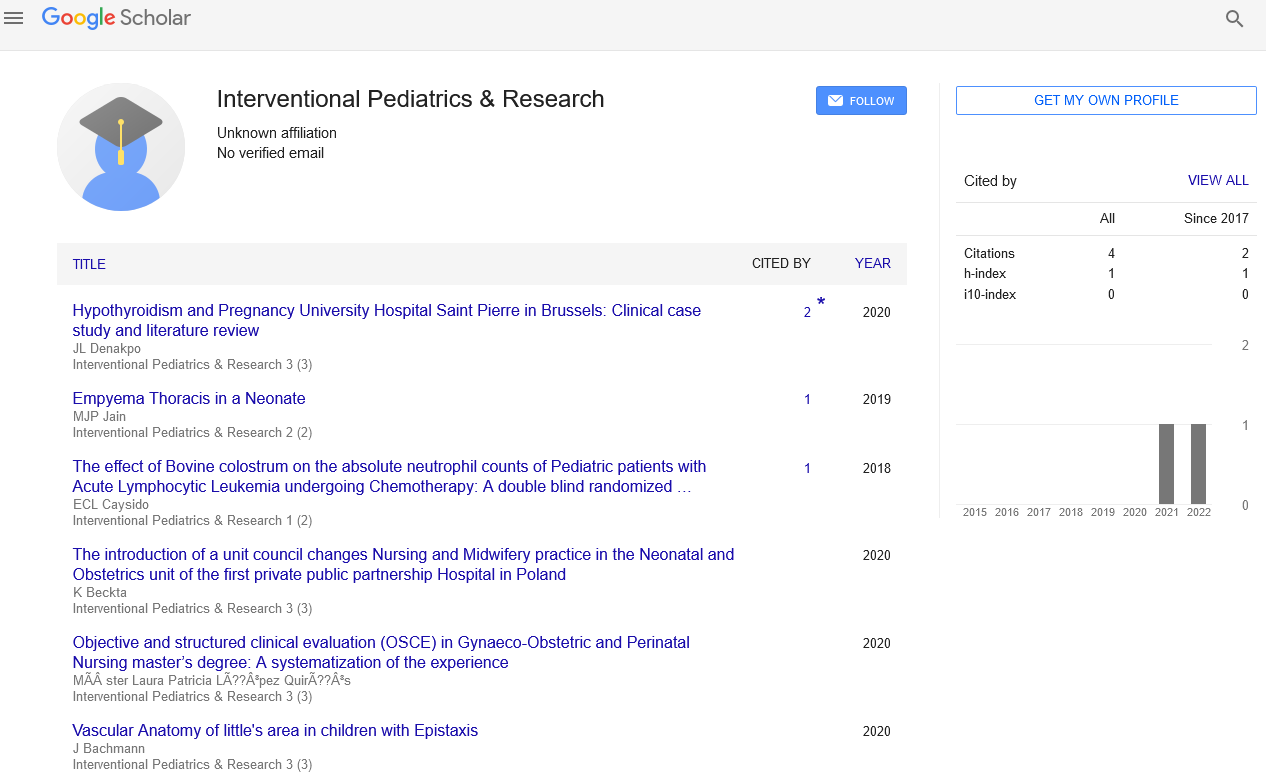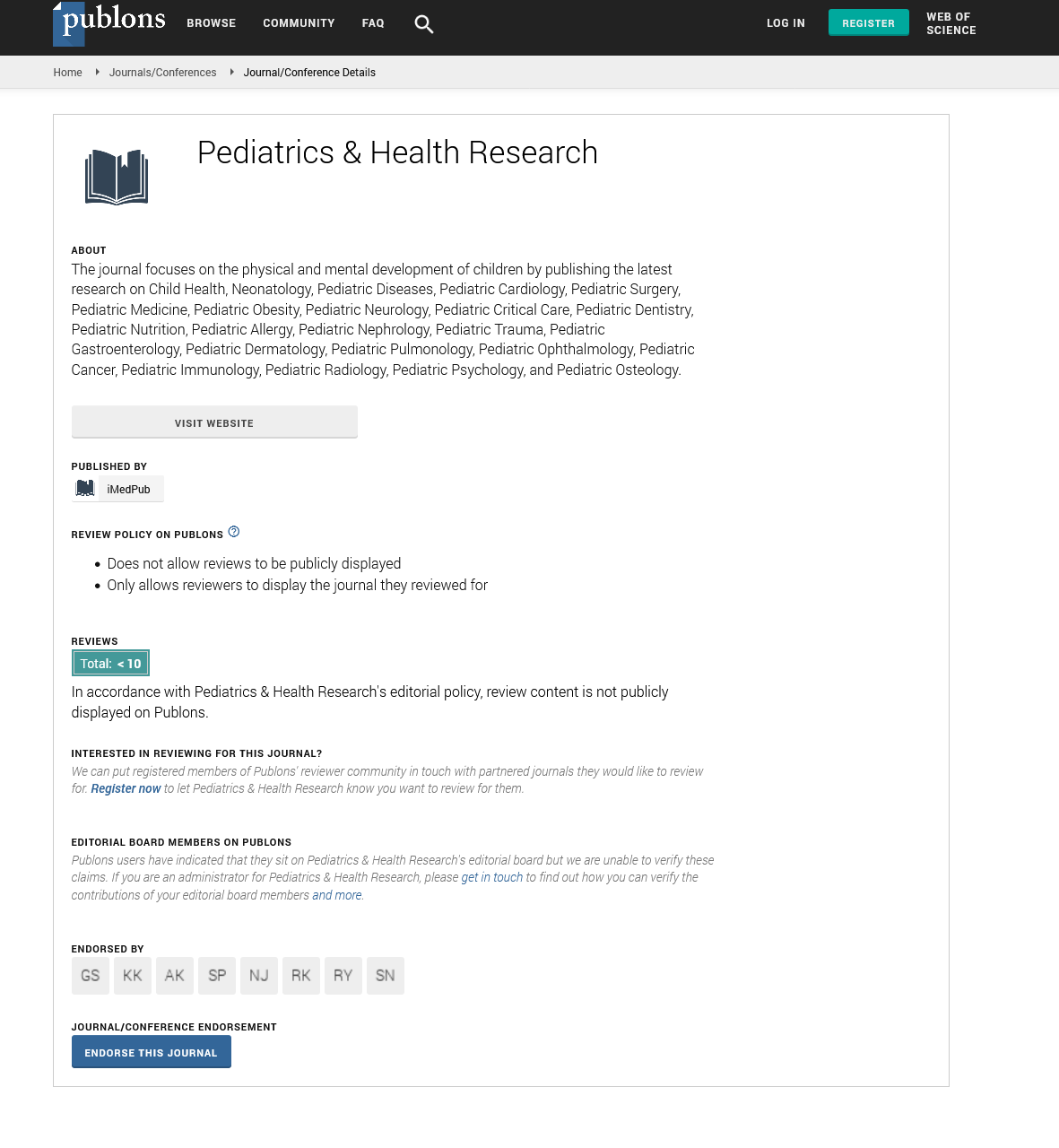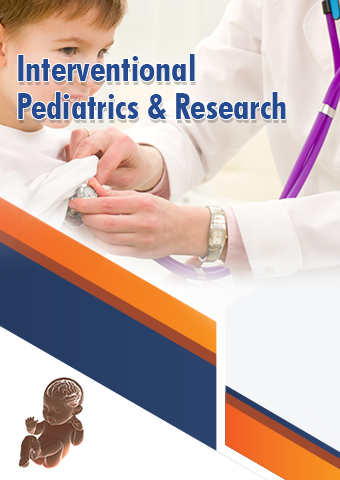Editorial - Interventional Pediatrics & Research (2023) Volume 6, Issue 3
Blood Pressure Changes During Healthy & Hypertensive Pregnancy: A Systematic Review and Meta-Analysis
MaIzab Alli*
Department of Medicine, University of Illinois–Chicago, USA
- *Corresponding Author:
- MaIzab Alli
Department of Medicine, University of Illinois–Chicago, USA
E-mail: Maizab123@gmail.com
Abstract
Preventing Gestational Hypertension: Deviant Haemodynamic Adjustments Affect Blood Pressure Our goal was to understand the timing and extent of blood pressure changes during singleton (normal) and hypertensive (hypertensive) pregnancies. We searched for relevant studies in PubMed (NCBI).We searched until November 2019.We included studies reporting original blood pressure during pregnancy combined with a non- pregnant reference measurement. We excluded studies in which women had a preexisting cardiovascular or metabolic disease or were taking antihypertensive medications. We pooled mean differences between pregnant women and non- pregnant women, and calculated absolute blood pressure values for pre-defined gestational intervals in normal and hypertensive pregnancy using a random-effect model.Meta-regression analysis to evaluate group differences in adjustments Blood pressure decreased in the first trimester of normal pregnancy, reaching its maximum reduction of −4 mmHg in the 2nd trimester (95% CI − 6–1 mmHg). Blood pressure decreased in both systoles and diastols (95% CI – 5–3 mmHg). Afterward, blood pressure increased towards pre-pregnancy values. All absolute blood pressure values throughout normal pregnancy were < 130/80 mmHg. Hypertensive pregnancies decreased only diastols at the beginning of pregnancy. Clinically moderate but significant mid pregnancy blood pressure decreases during normal pregnancy reinforce the current liberal cut-off limit of gestational hypertension Lack of a mid-pregnancy systolic drop may reflect increased vascular resistance in premenopausal women at risk for hypertensive pregnancy complication.
Keywords
Blood pressure pregnancy preeclampsia • Hypertensive pregnancies • Metabolic disease
Introduction
The first trimester of pregnancy is associated with significant systemic hemodynamic alterations that are beneficial to the uterus’s circulation. The decrease of peripheral vascular resistance during the first trimester leads to a number of compensatory mechanisms, such as an increase in circulating blood volume and heart output to maintain blood pressure (BP).All over the world, today’s antenatal care and management is largely based on these easy-to-use BP assessments [1]. They are used to track BP trajectories, and to identify elevated BP as an indication of early detection of abnormal BP levels provides the opportunity to implement preventative measures such as daily low dose aspirin and calcium supplements, careful antenatal care and pharmacological interventions that can reduce hypertension and the risk of preterm hypertension-related mortality and morbidity. In recent years, the CHCA/AHA has updated their guidelines to include lower thresholds for systolic/diastolic BP for the definition of non-pregnancy hypertension. However, the clinical relevance of this to pregnant women is unknown [2].BP levels and adjustment during pregnancy pregnancy and interpretation of physiologic from nonphysiologic are of utmost importance for the judgment of upcoming pregnancy-related hypertensive complications.
Description
Systematic reviews and meta-analyses based on existing maternal cardiovascular and haemodynamic adaption data were launched to gain a better understanding of physiologic physiologic adaptation during pregnancy in comparison to hypertensive pregnancy. The goal of this study is to describe BP adjustment trajectories during normal and hypertensive pregnancy.
Methods
Dye selection
The eligibility of the identified studies was evaluated in two stages. First, each study was independently evaluated for eligibility based on its title and abstract by 2 investigators (several investigators involved). This was followed by obtaining full-text articles and screening for eligibility based on inclusion and exclusion criteria by 2 out of 4 investigators (SDH/EM/NS/ZM/FAH/ FAH/ZM).If the studies were original studies measuring BP measurements during a human singleton pregnancy, they were included [3]. The studies had to provide a reference measurement, measured either before or at 6 weeks postpartum (same study group) or in a non-pregnant control (control group) [4].The data had to be presented as numerical values (mean with standard deviation (SD), standard error (SE) and 95% confidence interval (CI). Any discrepancies were resolved through mutual agreement or consulting a third investigator.
Data synthesis and analysis
The BP readings were divided into five categories based on gestational age: 1st trimester (12-14 weeks) 2nd trimester (15- 21 weeks)3rd trimester (22-28 weeks) 4th trimester (29-35 weeks) 5th trimester (36- 41 weeks) 6th trimester (41-52 weeks) 7th trimester (53-54 weeks) 8th trimester (54- 59 weeks) 9th trimester (62-64 weeks) 10th trimester (64-70 weeks) 11th trimester (66- 68 weeks) 12th trimester (73-74 weeks) 13th trimester (74-78 weeks) The primary outcome was the weighted average difference (MD) and the relative change as a percentage (95% CI) between the pregnant women and reference. The pooled estimates of absolute BP values with 95% CI were converted to SD using the Cochrane Handbook. If data was reported as median with an interquartile range of 1.35, studies were included [5,6]. The ratio between total variability and total variability (I2 statistic) was used as a measure of heterogeneity. I2 distinguishes true variability from sampling variance and expressed as a percentage. The sources of variability (reference group, study quality, measuring device, Korotkoff phase, frequency, and position of measurement) and differences (normotensive vs. hypertensive pregnancies) were analysed using meta-regression analysis using mixedeffects models. The reference curves were constructed assuming normal distribution throughout pregnancy [7]. To obtain reference values, we used a restricted cubicsplines model to compute 5, 50, and 95th percentiles weighted by the study sample size. All analyses were conducted using the Meta package (R version 4.0, version 4.2).
Discussion
In this meta-analysis, we quantified the normal adaptive BP response to pregnancy. The lack of a mid-term BP decrease has been questioned in recent years, but our results demonstrate a clinically modest but substantial mid-term BP decline in normotensive pregnancies. In hypertensive pregnancies, there was no decrease in systolic BP during the first half of the pregnancy, although diastolic BP initially decreased to a greater degree compared to non-hypertensive pregnancies [8]. As predicted, BP values increased significantly in the second half of pregnancy, reaching up to 45% of pre-pregnancy values at term. In normotensive pregnancies, diastolic and systolic BP began to decline from the 1st trimester and reached their nadir during the early 2nd trimester, after which BP increased towards reference values. Recent epidemiological studies have shown that both first trimester BP levels and normal or abnormally adjusted adjustment trajectories are related to gestational hypertension complications [9]. These findings support the idea that pre-existing cardiovascular disorders impacting pre-pregnancy haemodynamic and gestational circulatory remodelling influence the cardiovascular capacity to adequately respond to increased cardiovascular stress during pregnancy. Progressive pharmaceutical treatment with close BP control in mild-to-moderate hypertension reduces the risk of developing severe hypertension, which itself has been linked to poor maternal and perinatal health Specialized treatment for mild- to moderate hypertension that addresses the underlying haemodynamic imbalance of the heart’s output and blood vessels has the potential to reduce the risk for severe hypertension without compromising fetal development [10].
Conclusion
BP assessment is a critical component of gestational care guidelines to identify pre-existing hypertensive risk factors. The first systematic bio interventional metaanalysis of BP adjustments revealed a clinically modest but significant decrease in mid-term BP during normal pregnancy. In addition, healthy BP is lower than current recommendations. In women who do develop hypertensive pregnancy complications; they do not experience a decrease in systolic blood pressure, which may reflect enhanced vascular tolerance and tone.
References
- Bello AL, Acquah A, Quartey JN et al. Knowledge of pregnant women about birth defects. BMC Pregnancy and Childbirth. 13, 1471-2393(2013).
- Mbonda A. Diagnosis of Fraser syndrome missed out until the age of six months old in a low-resource setting: a case report. BMC paediatrics. 19, (2019).
- Timothy E. Obstetric ultrasound use in low and middle income countries: a narrative review. Reprod health .15, 1-26(2018).
- Dimopoulos G. Cardiovascular complications of down syndrome: scoping review and expert consensus. Circulation. 147, 425-441(2023).
- Persani L. Central hypothyroidism: pathogenic, diagnostic, and therapeutic challenges. J Clin Endocr. 97, 3068-3078(2012).
- Howard L, Mancuso AC, Ryan GL. Müllerian aplasia with severe hematometra: A case report of diagnosis and management in a low resource setting.J Podiatry Adolesc Gyneco. l32, 189-192(2019).
- Jomaa M. A challenging diagnosis and management of Herlyn-Werner-Wunderlich syndrome in low-resource settings: a case report complicated with hydronephrosis. Ann Med Surg. 70,102-843(2021).
- Ballantyne A, Newson A, Luna F et al. Prenatal diagnosis and abortion for congenital abnormalities: is it ethical to provide one without the other?. AJOB.9, 48-56 (2009).
- Melamed N. FIGO (international Federation of Gynecology and obstetrics) initiative on fetal growth: best pracice advice for screening, diagnosis, and management of fetal growth restriction. Int J Gynaecol Obstet. 1,152 -352(2021).
- Dolk H, Leke AZ, Whitfield et al. Global birth defects app: An innovative tool for describing and coding congenital anomalies at birth in low resource settings. Birth Defects Res. 113, 1057-1073(2021).
Indexed at, Google Scholar, Crossref
Indexed at, Google Scholar, Crossref
Indexed at, Google Scholar, Crossref
Indexed at, Google Scholar, Crossref
Indexed at, Google Scholar, Crossref
Indexed at, Google Scholar, Crossref
Indexed at, Google Scholar, Crossref
Indexed at, Google Scholar, Crossref
Indexed at, Google Scholar, Crossref


